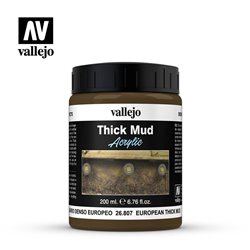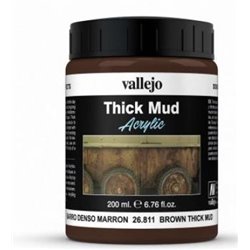You can use reed switches on your model railway when you want an action to be triggered by a train passing over a...
No products
Product successfully added to your shopping cart
There are 0 items in your cart. There is 1 item in your cart.
Search Tips
How can I add realistic tyre tracks to muddy terrain?
Adding realistic tyre tracks to muddy terrain in your scale model can enhance the scene’s authenticity and tell a story of recent activity. Here's how you can achieve convincing results:
1. Choose the Right Mud Texture
Start by selecting a suitable material for your muddy surface. Options include:
- Acrylic Paste – Mix acrylic modelling paste with brown and grey paint for a wet mud effect.
- Plaster or Polyfilla – When mixed with paint and applied thickly, this works well for dried or churned-up mud.
- Real Soil or Fine Sand – Sieved and mixed with PVA glue, it gives a natural, textured surface.
2. Create Tyre Impressions While the Mud is Soft
To make tyre tracks, press a scale-accurate spare wheel or tyre into the soft material before it fully sets. Roll it gently to create a continuous track. Ensure the tread pattern matches the type of vehicle in your scene.
3. Use Stencils for Precise Tracks
If the mud has already dried, you can use a stencil or stamp to press tread patterns into the surface. Some modellers create their own by rolling a tyre in putty, then using it as a stamp once hardened.
4. Layering for Depth
Realistic tracks aren't just indentations, they have raised edges where mud has been pushed aside. Build up the sides of the tracks using extra paste, fine sand or sculpted putty.
5. Add Wet or Dry Mud Effects
- For wet mud, apply a gloss varnish or a mix of PVA glue and water to selected areas.
- For dried mud, drybrush lighter brown tones over raised areas to highlight texture.
6. Blend with the Surrounding Terrain
Feather out the edges of the tracks into the surrounding mud using a soft brush or sponge. This prevents them from looking too artificial or harsh.
7. Add Small Details for Realism
- Scatter small puddles in deep ruts by adding clear resin or gloss varnish.
- Use mud splatters near the tracks by flicking thinned paint with an old toothbrush.
- Embed tiny stones or debris in the tracks for added realism.
Click here to receive the tips weekly in your mailbox. You can unsubscribe at any time.

.jpg)








